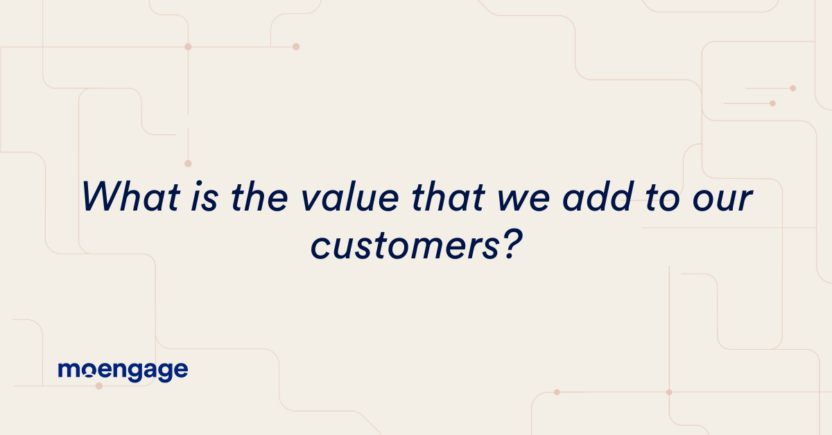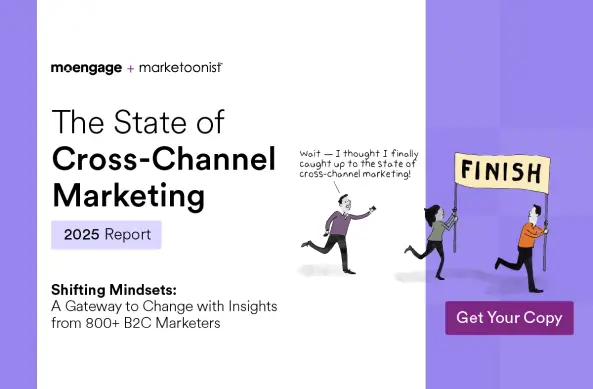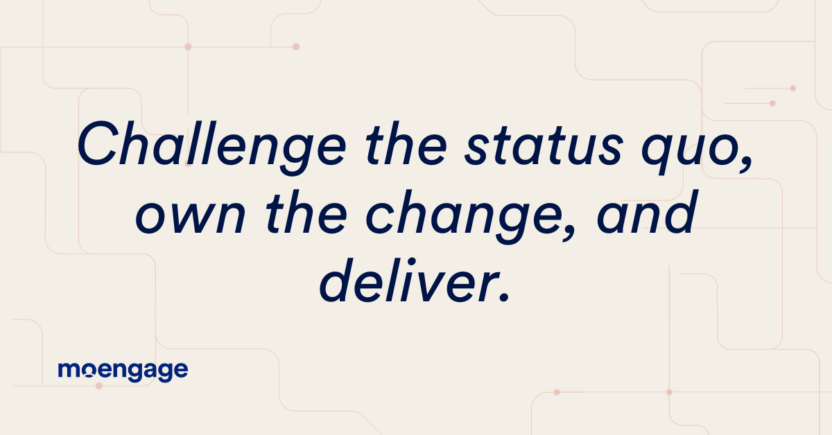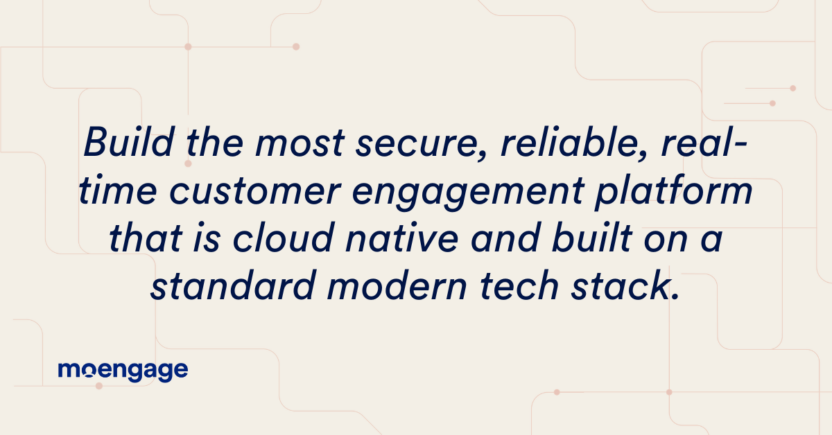Behind the Code: Engineering Year in Review 2024
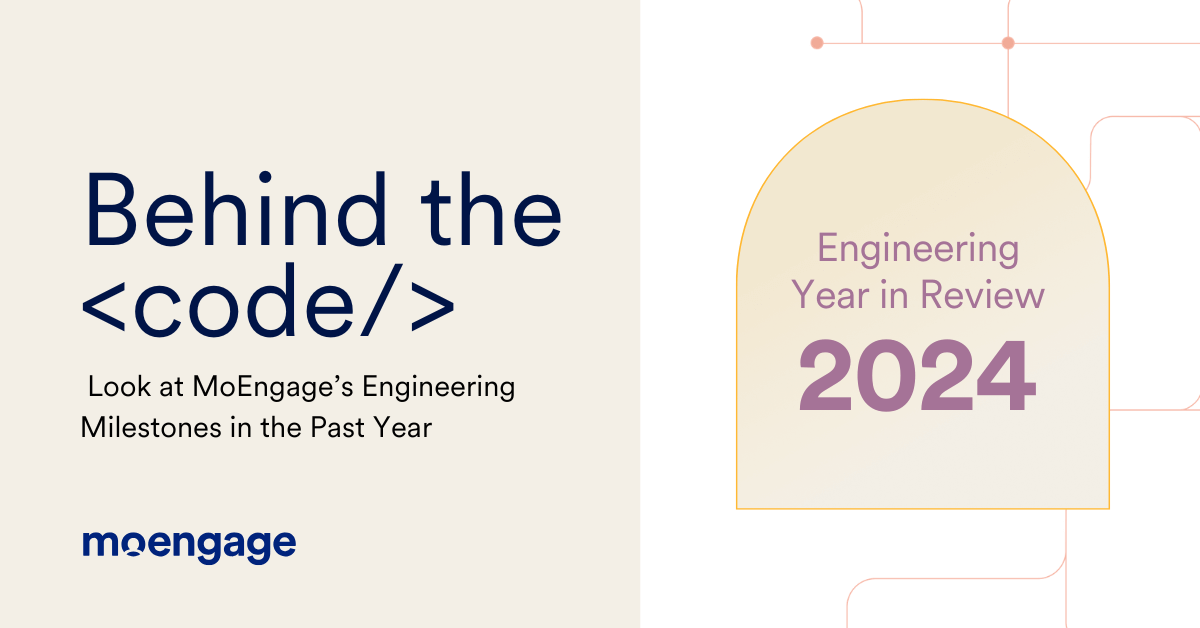
Reading Time: 6 minutes
I want to start the 2024 year review with the mindset that has always worked for us and helped move MoEngage engineering in the right direction.
I have seen the best engineers live by this mindset. Organizations with a strong desire for success, like ours, recognize the importance of living by this idealogy. We maintain a strong commitment to growth, and recognizing that every member’s contribution is valuable, we work together to unlock our organization’s full potential.
We at MoEngage Engineering constantly strive to reinforce our core principles, and as a natural part of our growth journey, we have doubled our efforts to ensure every team member embodies these values moving forward.
Building on our foundational beliefs, I’m excited to share the significant improvements we’ve recently implemented in our Engineering division, which have already begun delivering impactful results.
Vision
In 2024, we formalized our vision for MoEngage Engineering. This vision statement continues to guide us in making decisions and serves as a foundational framework that shapes our coherent and thoughtful decision-making. It still remains a source of inspiration and guidance that deeply resonates with our entire team.
Scale
The scale at which our platform operates has challenged our team for years, and our challenges grew by about 30% last year.
Developing an application that effectively serves millions of users is a complex challenge that goes far beyond initial production – it requires expert fine-tuning to meet rigorous service standards while carefully managing operational costs. How do we strike the perfect balance for 2 billion monthly active users, ensuring customer satisfaction and sound financial management? That’s the question guiding our development strategy.
Our collective strength lies in our ability to elevate our problem-solving approaches when faced with complex challenges – an aspect we are proud to encounter and address every day at MoEngage.
Speaking of scale, we launched a new data center for our customers in Indonesia, taking the total count of our worldwide data centers to 6.
As we move into 2025, our strategy includes a targeted expansion that will strengthen our global presence and introduce our services to a range of new markets.
Security
In 2024, we took proactive steps to embed security best practices into the core of our development workflow, ensuring that secure design is a central element of our product development from the outset.
We improved our DLP practices across the software applications used by our teams. We enhanced our cloud security posture, allowing our team members to access the data they have access to securely.
Our team integrated advanced GenAI technology into our operations to revolutionize our processes. This technology offers substantial time savings and operational efficiencies that we anticipate will be game-changers for us in 2025.
The past year brought unexpected and profound challenges, none greater than the loss of our head of security, whose memory will continue to inspire our path forward. 2024 was a year of resilience for our team. We also welcomed our new head of security, whose expertise is already evident through their recent completion of PIMS & BCMS certifications, a testament to our enduring dedication to excellent security practices even in times of transition.
As we reflect on this loss, our security team is committed to achieving our 2025 objectives with the excellence and focus they have always championed.
Quality Assurance
We all know bugs and incidents are unavoidable in production. Over the last few years, we have made significant investments to shift the testing leftwards and become more reliable.
As part of our initiative to integrate testing and security earlier in the product development cycle, we set a goal to enhance automation across all products by the end of 2024. Our efforts paid off, as we saw a significant reduction in manual effort. Today, we save 105 hours in testing per release cycle, greatly accelerating our time to market.
We implemented a new initiative known as Blackbox monitoring. This system rigorously tests our live production environment at regular intervals, ensuring that any potential issues are identified and resolved promptly. Thanks to this strategy, in 2024, we efficiently addressed over 40 incidents before they impacted our users. Our dedicated QA team has wholeheartedly adopted this methodology, and their commitment is reflected in the marked improvement of our service reliability and user satisfaction.
SDKs
How do we automate our releases for various Maven repositories? I’m proud to share that our SDK team’s innovative approach to solving this challenge has been recognized within the Maven community. Our plugin contributions are now listed on the Maven Central Repository; take a look.
Embracing a Kotlin multi-platform development approach enabled us to use the same codebase for iOS and Android platforms. This strategic move not only cut down development time significantly but also ensured a uniform experience for our customers interacting with our SDKs, which are the first touchpoints of integration for our customers.
Frontend
In a significant enhancement to our development process, we transitioned our frontend technology to use React instead of the Angular code that we used in the past.
Our frontend teams pioneered the adoption of micro frontend architecture, streamlining our systems so that each team can autonomously develop their part of our applications while presenting a unified platform to our consumers. This innovative approach has led to an impressive 3-5 days reduction in release times for each team. The commitment and skill our team has demonstrated through this transition are truly commendable, and I am thrilled with the progress.
Backend
While we always aim for continuous improvement and know we have the potential to achieve even more, in 2024, we successfully delivered several key initiatives that have positively impacted our customers and driven business growth.
We revamped one of the most coveted products of MoEngage – Flows. The new stack rollout is ongoing for some customers. This change will improve the reliability of Flows for our customers. Firebase Cloud Messaging has moved away from accepting multiple tokens in a single API to send push notifications. This was a massive surprise to us, but our team adopted it brilliantly, and HTTP2 multiplexing was introduced to counter this. We saved about $7k/month due to this change. We have also introduced FastAPI to one of our public-facing services, which receives burst traffic. This has reduced our p99 latencies for this service by about 10 times.
MoEngage data ingestion has become close to real-time, and we have greatly improved our customer experience. You can read more about that here. 93% of the time, we can provide data to our customers within 5 seconds of the data hitting our servers. The extension of this project is real-time segmentation for our customers, where we can help them interact with their audience accurately. Real-time segmentation capability has boosted our personalization experiences massively.
In our efforts to incorporate Iceberg tables into our data framework, we gained valuable insights into the optimizations needed to fully leverage this technology. With a clear roadmap for these enhancements, we are confident as we prepare for a successful implementation in 2025.
Operations and Culture
We have always aimed to excel in engineering practices, and a key priority for us is to consistently set and achieve higher standards. We have started refining our performance evaluation process, anticipating strategic enhancements in 2025 that will further our commitment to excellence.
We also reboarded all our team members, emphasizing what we expect from each team member and what kind of support they can get from the leadership team.
Additionally, we’ve initiated a comprehensive review with our engineering teams to clarify roles, expectations, and the extensive support available from our leadership.
This reinforced alignment ensures that every team member is fully engaged and supported in contributing to our collective success.
Improvements
Towards the end of 2024, we conducted a thorough review of our engineering practices and identified several opportunities for further advancement.
Operational excellence is our priority, and we’re taking concrete steps to enhance our processes in 2025. We developed a comprehensive action plan with clear targets to elevate our performance and deliver on our commitment to quality and innovation.
Ensuring every team member understands their role and contributions, we enter 2025 with a shared focus on executing these strategies and achieving our objectives.
As we reflect on 2024, I see not just the outcomes but also the heart and dedication our platform teams poured into every challenge.
My belief has never wavered that with the right focus, our platform teams are nothing short of remarkable – they’re the heartbeat of our company.
Together, we will continue to refine our approach until we meet the high standards we know we’re capable of.
In my years as CTO, I’ve seen the transformative power of data and clear objectives. As we step into the next year, I’m committed to fostering a data-driven and impact-focused culture that aligns with our passion for excellence. We will collaboratively redefine our OKRs, sharply focusing on the meaningful results that drive us forward.
What’s in Store for 2025?
In 2025, we want to change how we look at our success.
We have been examining micro metrics so far, but we want to change them to macro metrics and align them with our values. It’s not just about numbers; it’s about the real value each of those numbers represents for our customers.
Customer obsession is one of the core values of MoEngage.
From a deeply personal place, and as the CTO of MoEngage, I’m leading us towards embracing a ‘macro’ view of our impact—one that resonates with the meaningful experiences we strive to deliver to our customers every day.
We will judge our engineering triumphs not just on features and functions but on the true enrichment they bring to our customers’ lives – this is the question that will be at the heart of all our endeavors:
